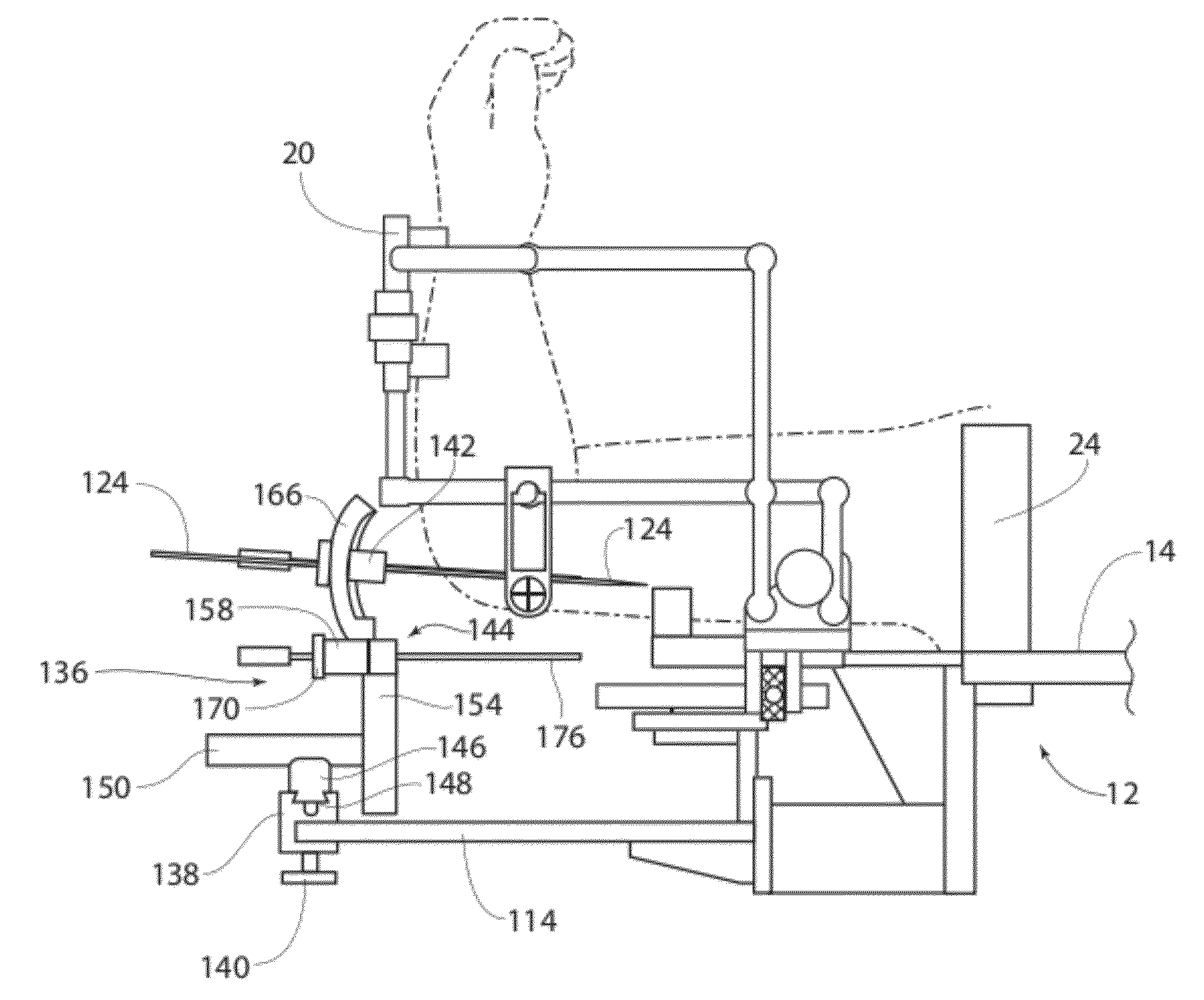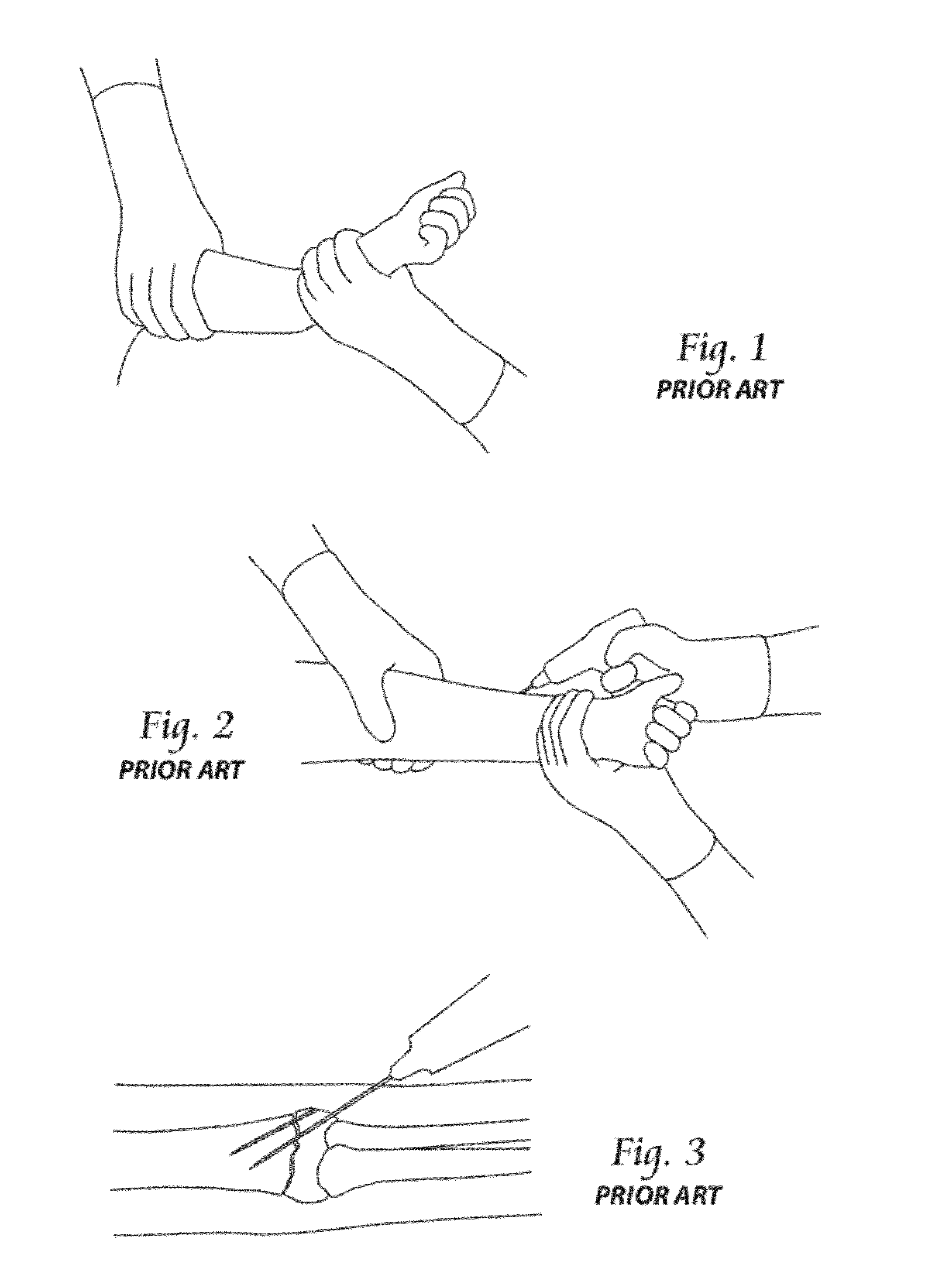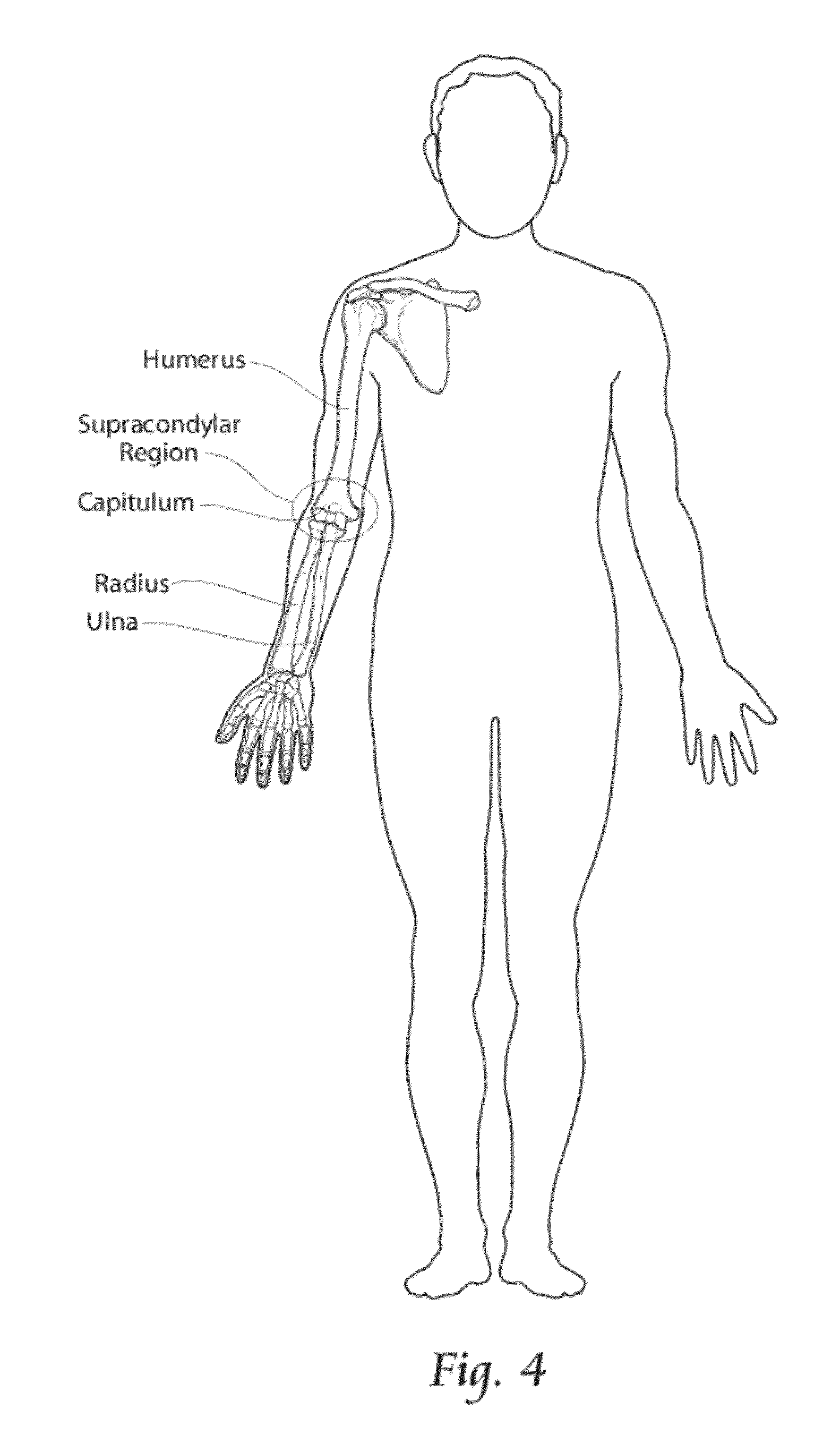Systems, Devices, and Methods for Mechanically Reducing and Fixing Bone Fractures
a technology of mechanical reduction and bone fracture, applied in the field of systems, devices and methods for reducing and fixing bone fractures, can solve the problems of at best only approximate a complete anatomic reduction of a complex fracture in all anatomic planes, and at best the loss of manual reduction, so as to minimize the loss of reduction, advance the standard of care, and minimize the effect of patient injury resulting from incomplete reduction
- Summary
- Abstract
- Description
- Claims
- Application Information
AI Technical Summary
Benefits of technology
Problems solved by technology
Method used
Image
Examples
first exemplary embodiment
C. First Exemplary Embodiment
[0101]1. The Reduction Frame
[0102]In the exemplary embodiment shown in FIGS. 17A and 17B, the system 10 comprises a reduction frame 12, shown respectively in frontward and backward perspective views. FIGS. 17A and 17B have been annotated to establish baseline directional points of reference for the reduction frame 12 from a structural standpoint, which will be referred to in subsequent description. FIGS. 17A and 17B establish, for the reduction frame 12, the baseline direction points of reference from a structural standpoint, called Front, Back, Left, Right, Top and Bottom, based upon the structural orientation of the reduction frame 12 as shown in FIGS. 17A and 17B. That is, the Front, Back, Left, and Right directional points of reference are relative to the structural orientation of the reduction frame 12 shown in FIGS. 17A and 17B, and not necessarily to the orientation of the reduction frame 12 when in use. The Top and Bottom points of reference do, ...
PUM
 Login to View More
Login to View More Abstract
Description
Claims
Application Information
 Login to View More
Login to View More - R&D
- Intellectual Property
- Life Sciences
- Materials
- Tech Scout
- Unparalleled Data Quality
- Higher Quality Content
- 60% Fewer Hallucinations
Browse by: Latest US Patents, China's latest patents, Technical Efficacy Thesaurus, Application Domain, Technology Topic, Popular Technical Reports.
© 2025 PatSnap. All rights reserved.Legal|Privacy policy|Modern Slavery Act Transparency Statement|Sitemap|About US| Contact US: help@patsnap.com



